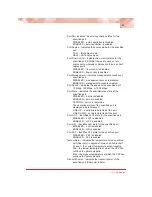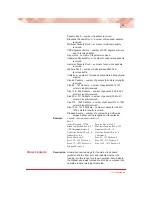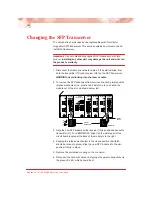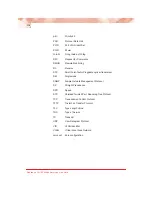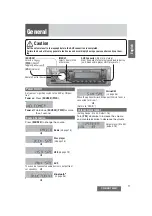
101
User Guide
Traps
By default, all traps for the R821 are enabled. Through software, each
trap can be disabled/enabled individually for each trap destination. The
R821 supports up to four trap destinations. The following table describes
the events that trigger SNMP trap messages to be sent to each trap
destination that is configured to receive them.
Table 7: Traps Table
Trap Index
Trap Trigger
1
Sensor
a
drops and reaches its lower limit.
a.The R821 includes sensors that measure the circuit board temperature, SFP transceiver
temperature, SFP transmit and receive laser levels, and circuit board power supply voltages.
2
Sensor returns from lower limit plus hysteresis
b
value.
b.The hysteresis value is an additional value added to or subtracted from the limits or
thresholds when traversing back and forth over the limit or threshold. This is intended to
reduce the number of false warnings and to avoid the flooding of warning messages.
3
Sensor rises and reaches its upper limit.
4
Sensor returns from upper limit plus hysteresis value.
5
Sensor drops and reaches its lower threshold.
6
Sensor returns from lower threshold plus hysteresis value.
7
Sensor rises and reaches its upper threshold.
8
Sensor returns from upper threshold plus hysteresis value.
9
SFP transceiver is inserted into a port.
10
SFP transceiver is removed from a port.
11
Link Loss Carry Forward occurs.
12
Link Loss Carry Forward is reset.
13
Link Loss Return occurs.
14
Link Loss Return is reset.
15
Port receives Far End Fault notification.
16
Port receives notification that Far End Fault has been reset.
17
Power level in the peer device falls below its minimum operating
value.
Services Line Card Sensors
Lower
Limit
Upper
Limit
Upper
Threshold
Lower
Threshold
Lower Limit
+ Hysteresis
Lower Threshold
+ Hysteresis
Upper Limit
— Hysteresis
Upper Threshold
— Hysteresis
Too low to operate
Cautionary range; component may not function properly
Good operating range
Too high to operate

